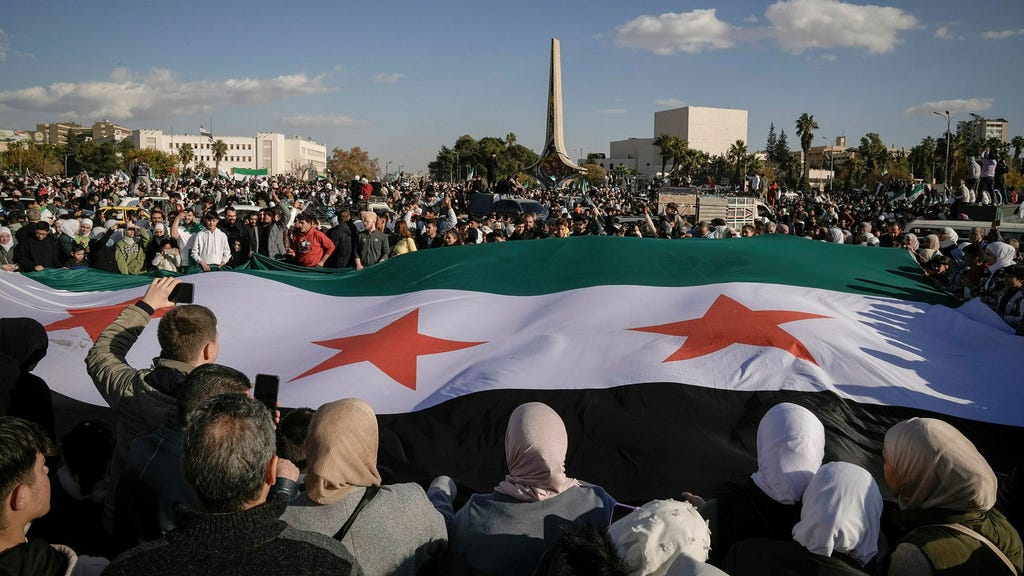The Fall of Assad: A Geopolitical Earthquake in the Middle East
The unexpected collapse of Bashar al-Assad’s regime in Syria has sent shockwaves throughout the Middle East, dramatically reshaping the regional power dynamics and creating a complex web of challenges and opportunities for both local actors and global powers. The abrupt shift in power has left a vacuum, triggering a scramble for influence and control over the war-torn nation. This analysis delves into the interests and anxieties of the key players involved, examining how they are navigating the new realities of a post-Assad Syria.
Russia’s Dilemma: Preserving Influence in a Changed Landscape
Russia, a steadfast ally of Assad, now faces the complex task of safeguarding its strategic interests in the wake of his downfall. Moscow’s primary concern revolves around the fate of its military installations in Syria, specifically the Tartus naval base, a legacy of the Soviet era, and the Khmeimim airbase, established during the Syrian civil war. These bases are critical for projecting Russian power in the Mediterranean and supporting its military operations in Africa. The Kremlin must now engage in delicate negotiations with the new ruling power, Hayat Tahrir al-Sham (HTS), to secure the continued presence of these vital assets. This represents a significant challenge for Moscow, given its long-standing support for the deposed dictator. Russia’s ability to maintain its influence in Syria will depend on its diplomatic maneuvering and its willingness to adapt to the new political landscape.
HTS’s Rise: From Jihadist Group to Governing Power
HTS, formerly known as Jabhat al-Nusra and affiliated with al-Qaeda, has emerged as the dominant force in Syria, presenting both a threat and a potential partner for international actors. Led by Abu Mohammed al-Julani, HTS has undergone a significant transformation, distancing itself from al-Qaeda and promoting a vision of an inclusive state for all citizens. However, its jihadist roots and the presence of hardline elements within its ranks raise concerns about its commitment to this moderate stance. The group faces the daunting task of governing a fractured nation, managing diverse religious minorities, rebuilding infrastructure, and addressing the economic crisis exacerbated by years of conflict and international sanctions. The international community will be closely watching HTS’s actions, assessing whether it can truly transition from a militant organization to a responsible governing body.
The Kurds’ Uncertain Future: Caught Between Regional Powers
The Kurdish groups in Syria, previously allied with the US against ISIS, find themselves in a precarious position. While they opposed the Assad regime, they enjoyed a degree of autonomy and protection under its rule. Now, they face increasing threats from Turkish-backed forces, who view them as an extension of the PKK, a Kurdish militant group designated as a terrorist organization by Turkey. The potential withdrawal of US troops from Syria, as previously suggested by former President Trump, would further exacerbate their vulnerability. The Kurds are seeking dialogue with the new Syrian government, hoping to secure their survival and autonomy in the evolving political order.
Turkey’s Balancing Act: Stability vs. Kurdish Concerns
Turkey, a key player in the Syrian conflict, is grappling with the implications of Assad’s fall. Ankara’s primary objective remains the elimination of Kurdish influence along its border, which it perceives as a national security threat. However, Turkey also recognizes the risks of a destabilized Syria, including potential refugee flows and the spread of extremism. This presents a dilemma for Ankara, requiring a delicate balancing act between pursuing its security interests and contributing to regional stability. Turkey’s approach will likely involve continued support for the new regime while simultaneously pursuing its operations against Kurdish groups, potentially contributing to further instability in the region.
Israel’s Opportunity and Anxiety: Navigating a Shifting Landscape
Israel, a long-standing adversary of the Assad regime, sees both opportunities and challenges in the new Syrian reality. The fall of Assad has allowed Israel to expand its influence in southern Syria and target Iranian-backed militias. However, the rise of HTS, a staunchly anti-Israel group, introduces a new potential threat. While HTS has indicated a reluctance to engage in immediate conflict with Israel, focusing instead on domestic consolidation, the long-term dynamics remain uncertain.
Iran’s Setback and Nuclear Ambitions: A Weakened Axis of Resistance
Iran, a major backer of Assad and Hezbollah, arguably suffers the most significant setback from the regime’s collapse. The loss of its Syrian ally weakens Iran’s regional influence and disrupts its supply lines to Hezbollah in Lebanon. This weakened position could potentially embolden Iran to pursue more aggressive policies, including the further development of its nuclear program, as it seeks to compensate for its diminished regional power.
The United States’ Uncertain Role: From Bystander to Potential Mediator?
The United States, while not directly involved in Assad’s downfall, faces renewed pressure to define its role in the reshaped Syrian landscape. The Biden administration must address the vulnerability of its Kurdish allies, the potential resurgence of ISIS, and the escalating tensions between regional powers. The US could potentially play a mediating role in promoting stability and encouraging dialogue between the various actors, but its ability to influence the situation remains limited given its reduced presence in the region and the complex interplay of competing interests.
The fall of Bashar al-Assad marks a pivotal moment in the history of Syria and the Middle East. The region is entering a period of profound uncertainty, characterized by shifting alliances, competing agendas, and the potential for further conflict. The international community must carefully navigate these complexities, prioritizing stability, humanitarian assistance, and diplomatic solutions to prevent a further escalation of violence and address the root causes of the Syrian crisis. The coming months and years will be crucial in determining the long-term trajectory of Syria and the broader Middle East.














